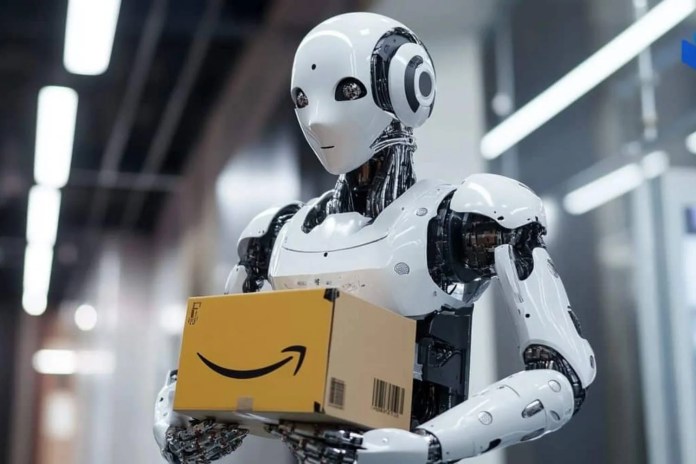- Features a small integrated screen, Amelia directs drivers with turn-by-turn navigation, scans package codes, and captures photo proof of delivery.
- Now leveraging advanced robotics, artificial intelligence, and innovative eyewear to shave precious seconds off every package’s journey
In its ongoing quest to redefine fast delivery, Amazon is once again raising the bar for logistics efficiency. The Seattle-based giant, long known for transforming consumer expectations from two-day shipping to same-day and even one-hour delivery, is now leveraging advanced robotics, artificial intelligence, and innovative eyewear to shave precious seconds off every package’s journey.
At Amazon’s annual “Delivering the Future” event, company executives showcased a suite of technologies focused on the notoriously expensive and complex “last 100 yards”—the final steps between a delivery vehicle and the customer’s front door.
One standout: advanced smart glasses, internally codenamed Amelia, developed specifically for delivery drivers. Featuring a small integrated screen, Amelia directs drivers with turn-by-turn navigation, scans package codes, and captures photo proof of delivery.
Unlike the bulky handheld GPS devices typically used today, Amelia’s hands-free operation streamlines workflow and safety. The device pairs with a controller worn in a vest, and its practical design includes swappable battery packs to address longevity on long shifts.
Delivering promising results
According to Beryl Tomay, Amazon’s vice president of transportation, hundreds of drivers have tested Amelia, delivering promising results.
“It reduces the need to manage a phone and a package,” Tomay said, emphasising that the glasses help drivers remain focused and safe on the job. She noted that the new technology has already led to time savings of up to thirty minutes per shift in some cases.
For now, the glasses are experimental and optional; Amazon plans to distribute them at no cost to interested drivers and contractors, but widespread adoption—ahead of formal rollout—remains in flux.
This push for efficiency builds on previous innovations.
Last year, Amazon introduced a delivery van scanner that shines a green spotlight on the correct parcel for each stop, saving time usually spent reading labels. The company has also recently unveiled detailed digital maps that offer richer information about neighborhoods and building layouts, surpassing standard navigation tools to further trim delivery times.
Amazon’s automation efforts
Inside its warehouses, Amazon is expanding its automation efforts. The company demonstrated a new robotic arm, dubbed Blue Jay, designed to collaborate with human workers by picking items and sorting them for faster order fulfillment.
The robotic system is already in use at a South Carolina warehouse and will soon be rolled out to more sites—particularly those focused on ultra-rapid, sub-same-day deliveries. Amazon claims Blue Jay reduces workplace injuries and occupies less floor space than previous-generation robots.
Additionally, a new artificial intelligence system is being deployed at select warehouses, starting in Tennessee. This software will monitor real-time operations to prevent gridlock and streamline daily planning. “We now have a tool to analyze all the site data as it happens,” said Tye Brady, chief technologist of Amazon Robotics. The goal: coordinated, proactive warehouse management across Amazon’s entire network.
However, innovation brings transformation. According to the New York Times, Amazon anticipates that automation will reduce its US hiring needs by 160,000 workers over the next two years, even as it continues to hire short-term staff for the holiday season.
The company’s technological leadership comes at a time when Amazon shares have dipped, closing down 1.8% at $217.95 on Wednesday—the only one of the so-called Magnificent Seven tech stocks to show a year-to-date decline.
Discover more from TechChannel News
Subscribe to get the latest posts sent to your email.




